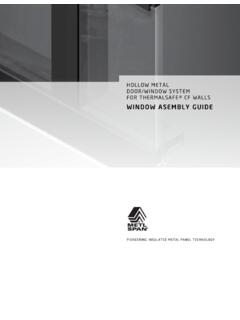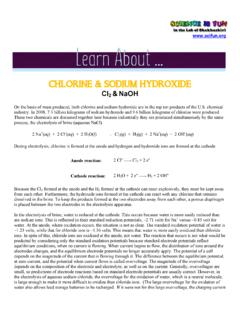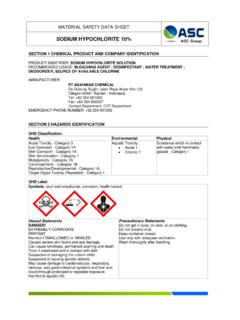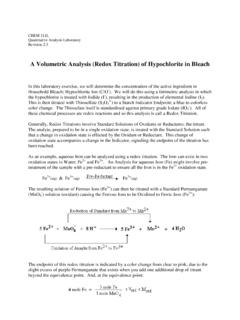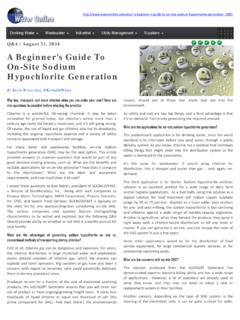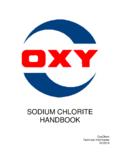Transcription of Sodium Hypochlorite Effects on 304L Stainless Steel
1 Sodium Hypochlorite Effects on 304l Stainless Steel Cleaning regimens in food processing plants subject wall and ceiling coverings, equipment and other materials to very harsh conditions that are not normally present in other types of commercial and industrial environments. The surfaces of insulated metal panels are particularly vulnerable because high-pressure spray, hot water and various chemicals impinge directly on the panel facings and paint coatings multiple times each day. All paint coatings and facing materials will perform better or worse under these harsh procedures, and each material has some disadvantages to consider. Constant exposure of Stainless Steel to chemicals containing chlorides will cause the chromium component on the surface to dissolve. This permits the free iron in the Stainless Steel to react with oxygen to form rust. Ceiling panels tend to be more susceptible to this phenomenon than wall panels.
2 As water from the wash-down process begins to evaporate, the humidity level in the room rises and condensation containing chlorides starts to form on the face of the panels. This evaporation process concentrates the chlorides, which remain on the panel faces after all the condensation has completely evaporated. Excerpts from an article by John Tverberg explain more clearly the mechanics of this phenomenon. What is Stainless Steel ? Stainless Steel is not a single alloy, but a large family of alloys with different properties for each member. There are hundreds of grades and sub grades in the Stainless Steel family, each designed for a special application. Chromium is the magic element that transforms iron into Stainless Steel . Stainless Steel must contain at least percent chromium to provide adequate resistance to rusting, and the more chromium the alloy contains, the better the corrosion resistance becomes.
3 But there is an upper limit to the amount of chromium the iron can hold, so additional alloying elements are necessary to develop corrosion resistance to specific media. (304 Stainless is 16% chromium) We must remember that Stainless Steel is an alloy of iron. According to its definition, Stainless Steel must contain a minimum of 50 percent iron. If it contains less iron, then the alloy system is named for the next major element. For example, if the iron is replaced with nickel, so that the iron is less than 50 percent, it is called a nickel alloy. Chromium imparts a special property to the iron that makes it corrosion resistant. When the chromium is in excess of percent, the corrosion barrier changes from an active film to a passive film. Whereas the active film continues to grow over time in the corroding solution until the base metal is consumed, the passive film forms and stops growing.
4 This passive layer is extremely thin, in the order of 10 to 100 atoms thick. It is composed mainly of chromium oxide, which prevents further diffusion of oxygen into the base metal. But, chromium also is Stainless Steel s Achilles heel. The chloride ion is Stainless Steel s nemesis. The chloride ion combines with chromium in the passive layer, forming soluble chromium chloride. As the chromium dissolves, free iron is exposed on the surface and reacts with the environment forming rust. Special care and cleaning recommendations for Stainless Steel are available from The Specialty Steel Industry of North America on their web site, in a handbook titled The Care and Cleaning of Stainless Steel . It provides specific information for properly maintaining various types of Stainless Steel . Thoroughly rinsing all of the surfaces in a wash-down area with fresh water, including the ceilings will minimize the potential for chlorides to damage the chromium oxide, passive layer.
5 In addition, circulating air across the ceiling surface can help prevent condensation from forming in the first place. Metl-Span, LLC Lewisville, TX
